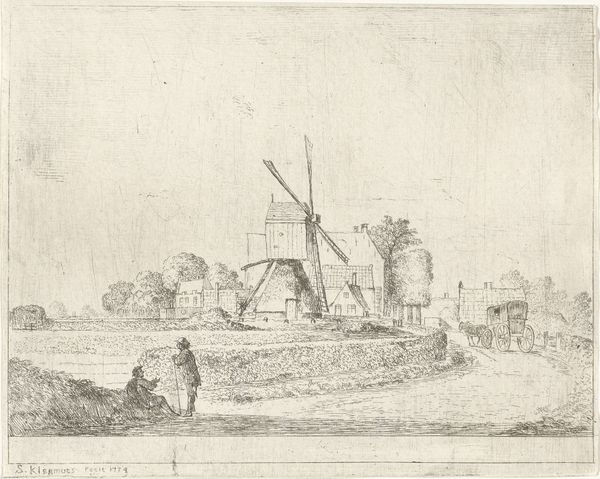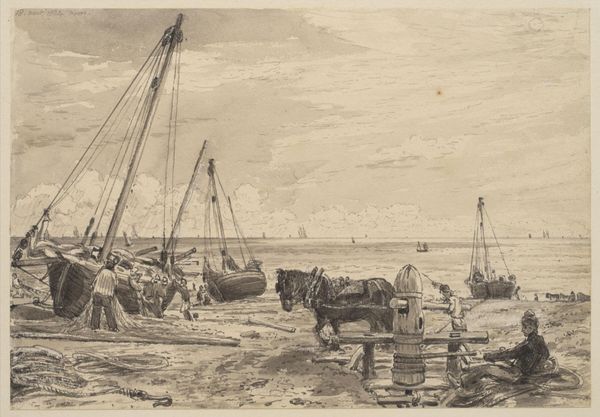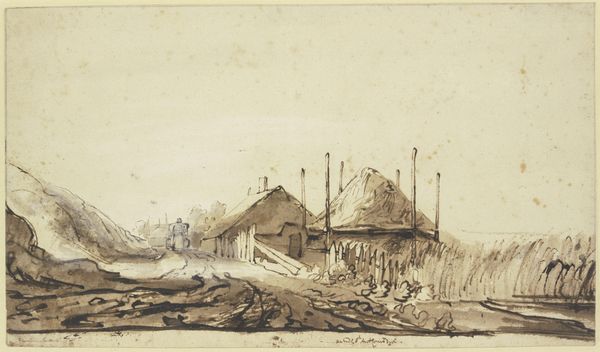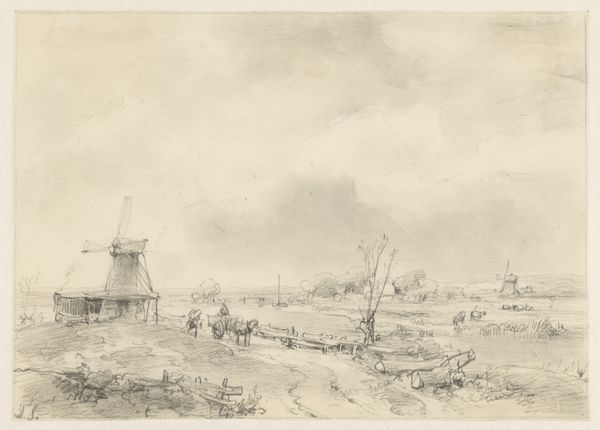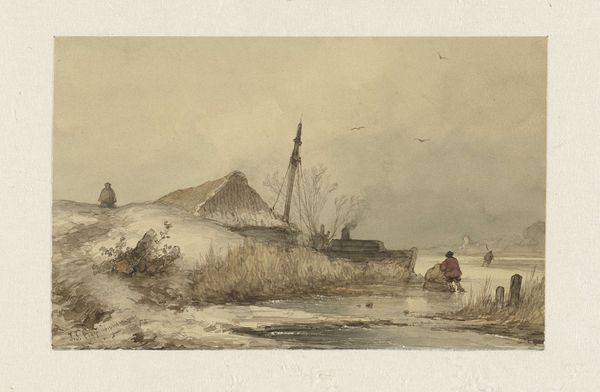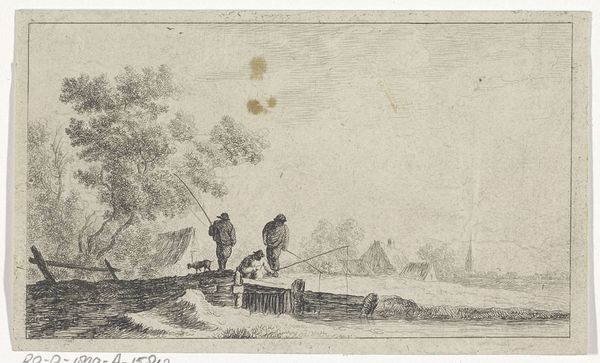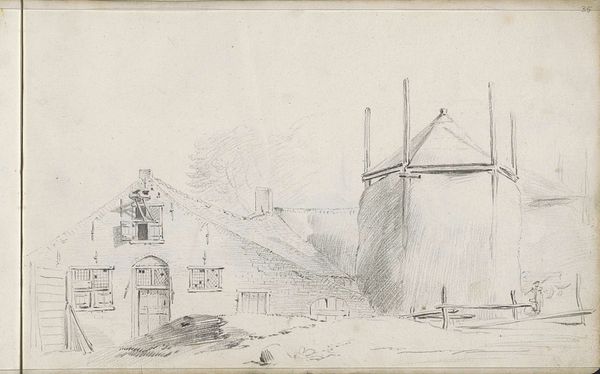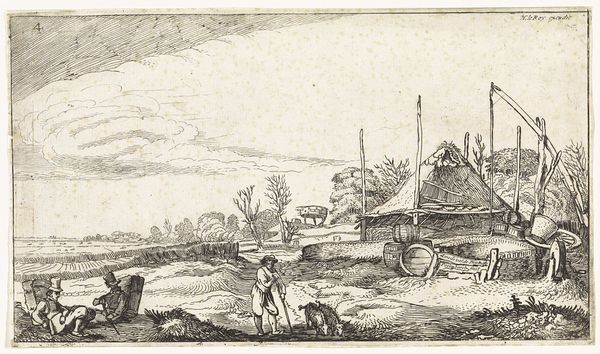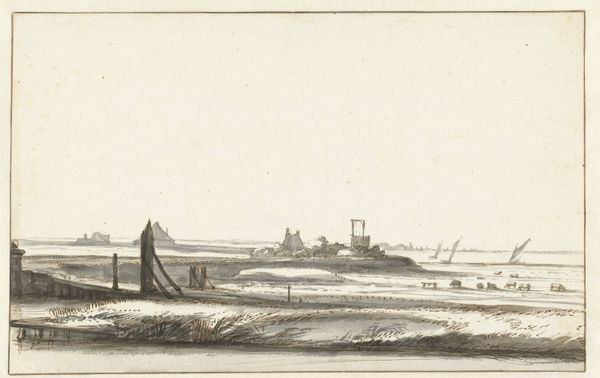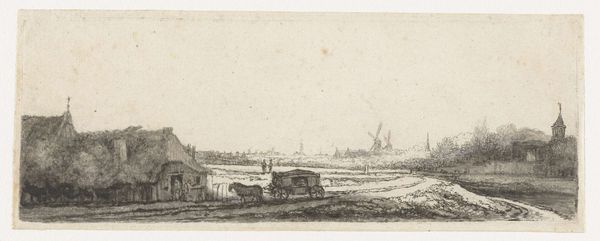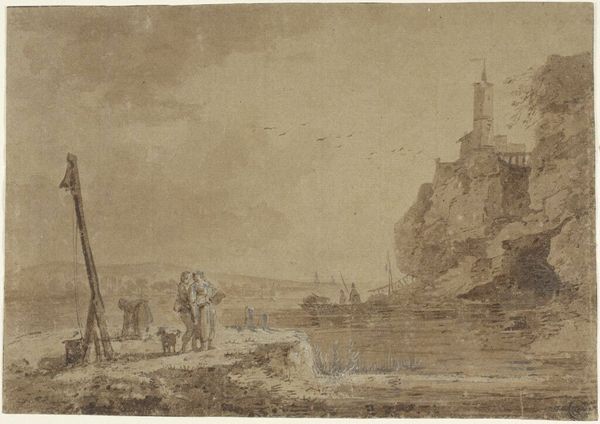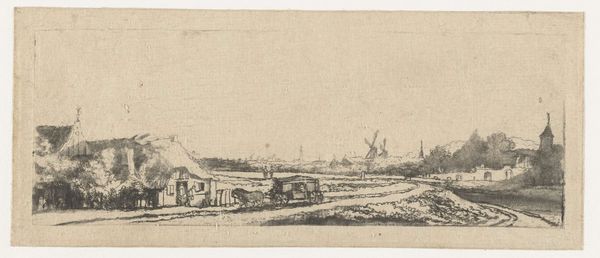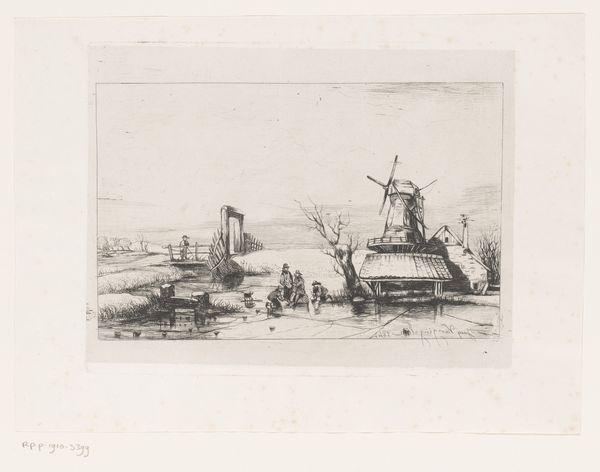
watercolor
#
dutch-golden-age
#
landscape
#
figuration
#
watercolor
#
watercolor
#
realism
Dimensions: height 119 mm, width 191 mm
Copyright: Rijks Museum: Open Domain
Curator: This delicate watercolor work, created by Joseph Hartogensis between 1832 and 1865, is titled "Landschap met molen," or "Landscape with Windmill." It resides here at the Rijksmuseum. Editor: It has a wistful quality. Pale tones give it a rather gentle, even melancholic air. It looks to me more like an exercise in depicting the damp Dutch climate through subtle material changes than a celebration of the industrial technology. Curator: Indeed. And those tones speak to something deeper when viewed from our contemporary understanding of climate and ecology, don’t you think? Consider this work as produced during the beginning of a time of enormous transformations of land use and production, a subtle reminder that technology always comes with a price and that these "charming" or "folkloric" machines were actually transforming ways of life forever. Editor: I see your point. It definitely shows an environment increasingly shaped by labor and the necessities of production. It makes me consider not just the mechanics of milling, but the physical work done in those marshy conditions, the crops processed, and ultimately the human need the process serves. Look closely—the artist subtly uses the layering of colors to differentiate the work on land versus the open water. It draws your attention to this dependence upon geography for daily survival. Curator: I agree. But also it prompts us to examine the lives of these people situated by water. What roles do these men perform? How does class dictate those roles? In some ways, it romanticizes those functions—lacking a critical view of working conditions or labor laws of the time. It needs additional contextualization so modern viewers might avoid idealizing inequitable systems of labor distribution or capitalist enterprise of 19th-century Netherlands. Editor: A strong argument for broadening its interpretive value to avoid glorifying harsh conditions. Perhaps some display materials about Dutch mercantilism, colonial exploitation, or histories of labor union organizing could contextualize it well. Curator: Exactly! Understanding Dutch expansion—social mobility alongside the industrial advances this windmill represents-- helps bridge it to now, allowing this delicate work to illuminate essential questions about social justice. Editor: It also really shows the quiet power inherent in quotidian, accessible art forms—I admire Hartogensis’ delicate approach with such loaded subject matter, and I think it deserves thoughtful consideration.
Comments
No comments
Be the first to comment and join the conversation on the ultimate creative platform.
